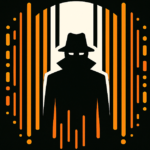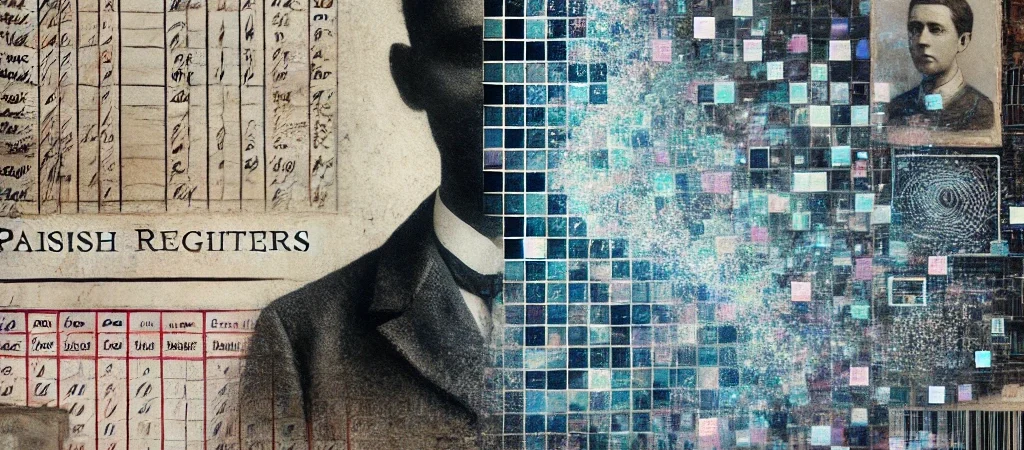While documenting an ordinary family tree of renters, laborers, and forgotten ancestors, a pattern emerged: lives only recorded when the state or church needed them. This series follows that thread from parish registers to digital ID systems, revealing a continuity of population management—and asking what freedom looks like today.
From Tree to Grid
This series began with a question: how far back can you trace your family tree?
What unfolded wasn’t a lineage—it was a map of power. A system. Names appeared not as lives, but as entries. Each ancestor visible only when the state, the church, or the machine required them to be.
From the earliest parish registers in the 1500s, through census and tenancy records, to biometric IDs and behavioral tracking today, one truth became clear:
Freedom is not recorded. Control is.
This final post in the series explores where that leaves us. After generations of labor without legacy, brief windows of ownership, and the tightening grip of digital identity—what does freedom look like now?
Rebuilding the Path So Far
Before we look forward, we must look back at where we’ve come.
Post 1: Genealogy and Class – Whose Ancestors Get Remembered?
Most family members weren’t remembered because they were important. They were recorded because they were taxable, trackable, or expendable.
Post 2: Recordkeeping as Population Control
Records were never neutral. From church registers to state census forms, their purpose was always to manage—not to commemorate.
Post 3: The Urban Throughput Machine
Industrial cities weren’t organic. They were designed to absorb, circulate, and extract from populations—without ever empowering them.
Post 4: Immigration and the Maintenance of Throughput
When local labor ran dry, the machine replaced it with immigrants—welcomed for function, not fellowship.
Post 5: The Baby Boomer Divergence
A brief postwar opening allowed one generation to accumulate wealth. But this was not a shift—it was an exception.
Post 6: Agenda 2030 and the Great Reset – The Return to Serfdom?
Digital systems now promise equity and sustainability while reasserting total control—through identity, currency, access, and surveillance.
Post 7: From Parish Register to Digital ID – A Timeline of Control
The architecture of oversight is seamless, scalable, and centuries-old. Only the interfaces have changed.
Now we ask: is there a way out?
What Freedom Isn’t
Before imagining a new kind of freedom, it’s necessary to discard the false ones.
1. Compliance Is Not Freedom
Obedience to policy, ESG scores, or CBDC conditions is not freedom. It is managed access—permission granted in exchange for behavior.
2. Convenience Is Not Freedom
Auto-login, biometric gates, and platform integration offer speed—not sovereignty. They are tools of traceability, not autonomy.
3. Representation Is Not Freedom
Voting within systems designed to serve capital and bureaucracy is not freedom. It is simulated participation within a closed architecture.
The Lives That Reveal the Truth
Looking back through the anonymised family tree, the outlines of real freedom become clearer—because they were mostly absent.
- The laborer recorded in a single census, then buried in a mass grave.
- The domestic servant who migrated to London and vanished from history after her employer moved.
- The child who died in infancy, too early to become data, yet quietly omitted from memory.
These ancestors had no control over their time, movement, income, or documentation. They didn’t choose their homes, jobs, or even whether to be remembered.
They lived in the gaps—outside freedom, and largely within necessity.
What Freedom Looks Like Now
So what does true freedom look like today, in a world where every transaction, movement, and identity is monitored?
1. Freedom Is Disconnection from the Grid
Not total withdrawal—but strategic retreat:
- Owning tools instead of renting platforms
- Paying in cash, gold, crypto, or barter
- Growing, building, and sharing outside digital oversight
In one modern family story, a descendant now lives part-time off-grid. They homeschool, use cash, and travel without digital breadcrumbs. They are not invisible—but they are unmonetizable. That’s a start.
2. Freedom Is Refusing Identity as a Product
A person is not a profile. Refusing to feed the algorithm is resistance:
- Use aliases where allowed
- Question every form that demands biometric data
- Deprioritize reputational scores or ranking systems
Even one ancestor, forgotten in every registry but a handwritten prayer book, lived more privately than most people today.
Privacy isn’t regression. It’s prefiguration.
3. Freedom Is Local, Voluntary, and Interpersonal
National governments and global institutions will continue to digitize and centralize. But freedom survives in:
- Peer-to-peer economies
- Local currencies and trust circles
- Face-to-face agreements that bypass digital compliance
One cousin in the tree now works as a craftsperson in a regional town—no LinkedIn, no Facebook, no smartphone. They earn less. But they choose more.
That’s not failure. That’s liberation.
The Principles of Modern Freedom
Let’s make them plain:
| Principle | Practice |
|---|---|
| Autonomy over Identity | Avoid centralized biometric systems |
| Access over Permission | Use open-source, interoperable, offline-first tools |
| Local over Global | Rely on nearby systems of exchange and mutual aid |
| Private over Public | Treat your data as sacred, not as currency |
| Agency over Algorithm | Delay automation; make conscious decisions, not predictive ones |
| Ownership over Access | Prefer buying, building, or borrowing over subscription |
| Exit over Loyalty | Be willing to leave platforms, jobs, and cities that demand totality |
Freedom as a Fractal, Not a Destination
Freedom doesn’t arrive all at once. It’s not a revolution, or a passport stamp, or a manifesto.
It arrives:
- In the decision not to enroll your child in a data-linked ID system
- In a conversation over the fence, not an app
- In the act of repairing something, instead of replacing it
- In the quiet moment where nobody is watching—and you don’t care
In the family tree, those were the forgotten moments. The undocumented days.
Now, they are revolutionary.
Freedom is not granted by institutions. It is withdrawn from systems.
The ledger will never forget you. The platform will never stop asking. The machine will never volunteer to unplug itself.
But you can.
And when you do—even in part—you return to the life your ancestors never had the chance to live:
not remembered by the system, but chosen by yourself.
Complete Series Recap:
- Genealogy and Class – Whose Ancestors Get Remembered?
- Recordkeeping as Population Control
- The Urban Throughput Machine
- Immigration and the Maintenance of Throughput
- The Baby Boomer Divergence
- Agenda 2030 and the Great Reset – The Return to Serfdom?
- From Parish Register to Digital ID – A Timeline of Control
- You are here. What Freedom Looks Like Now






